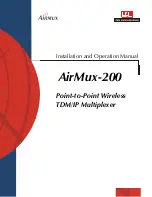
23
HART Multiplexer Master KFD2-HMM-16
Commissioning
Subject to reasonable modifications due to technical advances.
Copyright Fuchs, Printed in Germany
Fuchs Group • Tel.: Germany (06 21) 7 76-0 • USA (330) 4 25 35 55 • Singapore 7 79 90 91 • Internet http://www.pepperl-fuchs.com
P
a
rt
N
o
.: 1
09143
, D
a
te o
f i
ssue 29
.11.2
000
4
Commissioning
4.1
Commissioning check list
The commissioning of the Multiplexer Master is summarised in the following check list. You should follow
the list through in sequence, actions that have already been carried out can be skipped. The steps required
for commissioning the multiplexer refer to the section in which the respective procedure is described in
detail.
The usual commissioning procedure is as follows:
Installation
•
Installation of the field devices
•
Selection and connection of the motherboard and Flex-Interface (see also section 2.3.5 and 2.3.6)
•
Selection and connection of the isolating modules
•
Connection of the process control system
•
Connection of the Multiplexer Masters and Slaves (see section 2.3.5 and 2.3.6)
•
Connection of the Service Station. If necessary, install the interface converters.
Set up the RS 485 address and set the baudrate(see section 2.1.12)
Caution: Note the polarity of the R S485 connection (see section 2.1.13).
Operation
•
Wait for the start-up sequence to finish (see section 2.1.7)
•
Start the parameter assignment (see section 2.1.10), in particular, establish the position of the multiple-
xers that are being used in the module table (see section 2.1.6)
•
Carry out the loop construction (REBUILD, see section 2.1.6)
•
Activate the SCAN function, if required (see section 2.1.6)
4.2
Data access to the connected transmitters
The way in which data access to the connected field devices can take place depends on the operator tool
that is being used.
In general, however, the field devices are to be found in a project tree under the HART Multiplexer Slaves
(the master integrates the slave unit on slave address 0), where device data, parameters and diagnostics
can be accessed via menu functions. A project tree of this type is described in section 2.3.3.
The data, parameters and diagnostic windows accommodate data for the underlying HART commands,
which differ considerably, depending on the field device.
Only the "Universal" commands and general response codes have the same functions on all devices, so
that information relating to the devices themselves, as well as the process values and several items of
diagnostic information can be represented in a consistent manner.
The device must be disconnected briefly from the power supply in order to accept the values set
on the DIP switches.














































